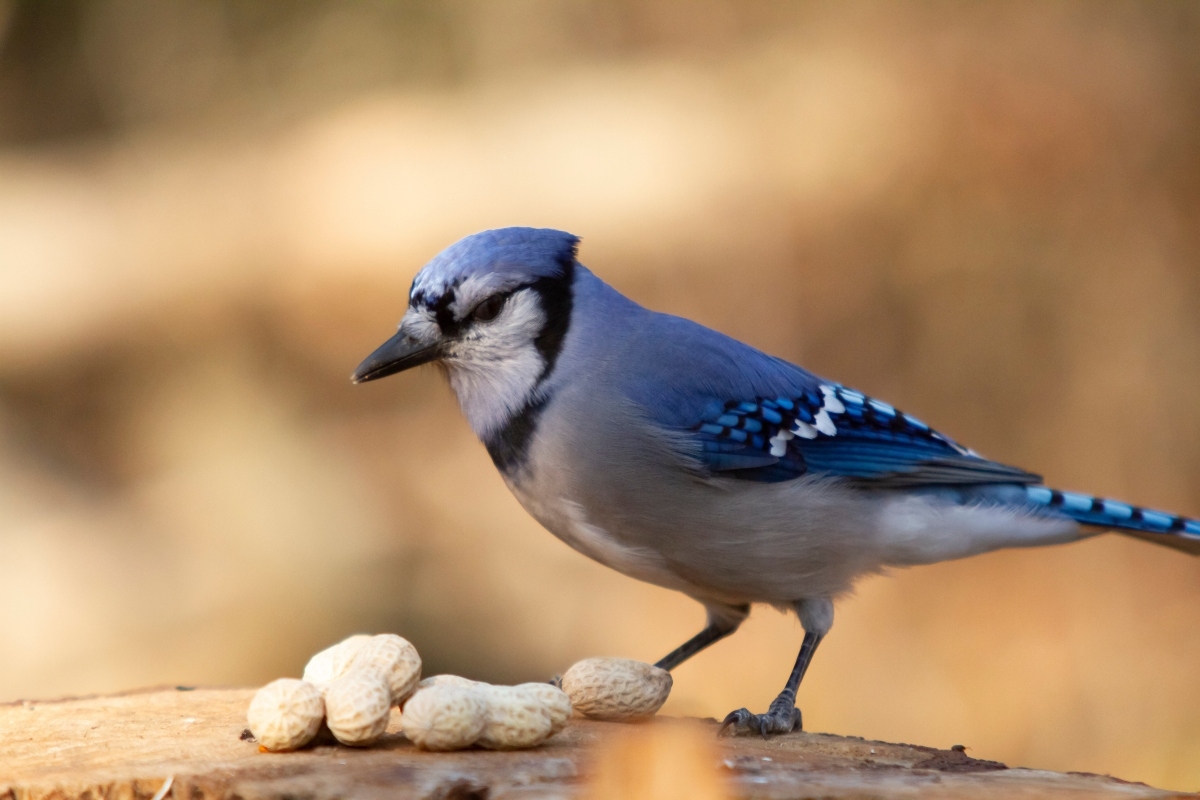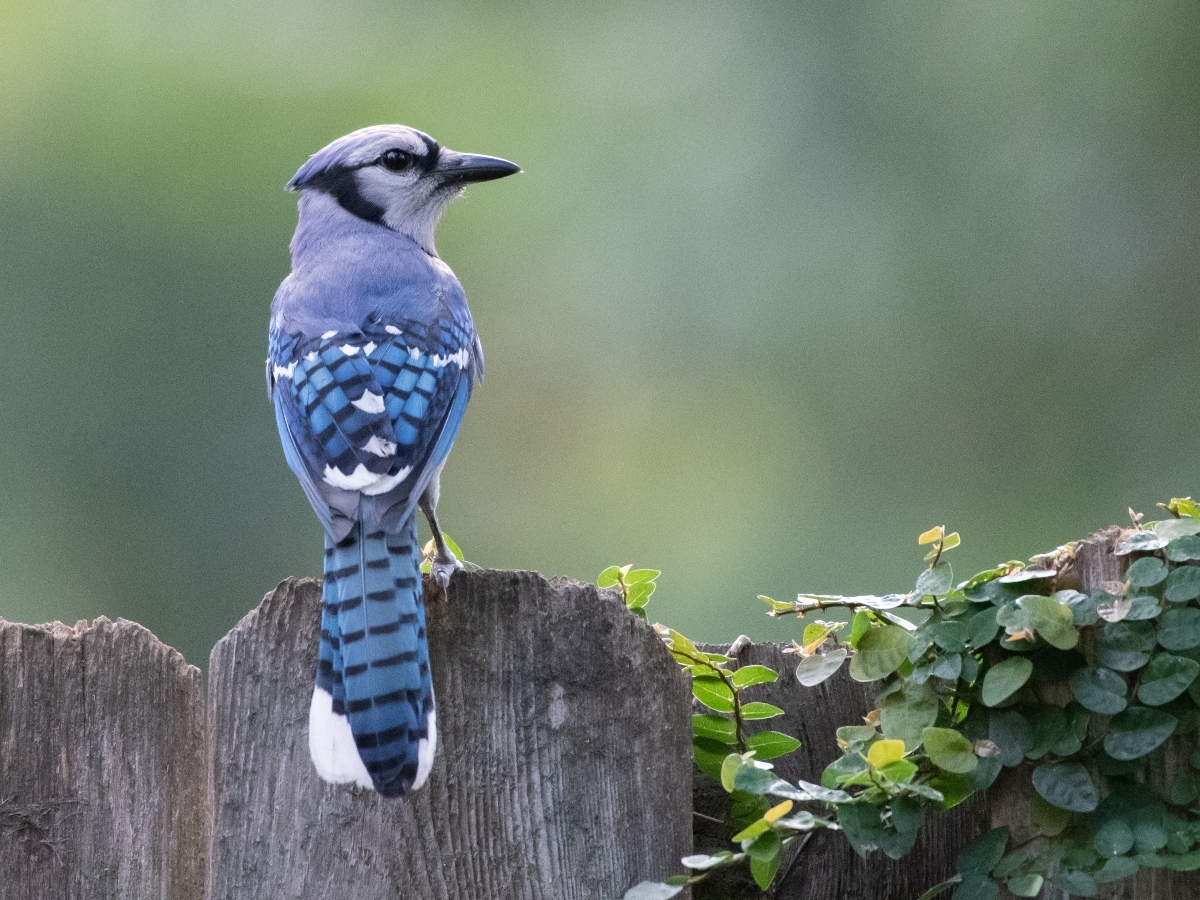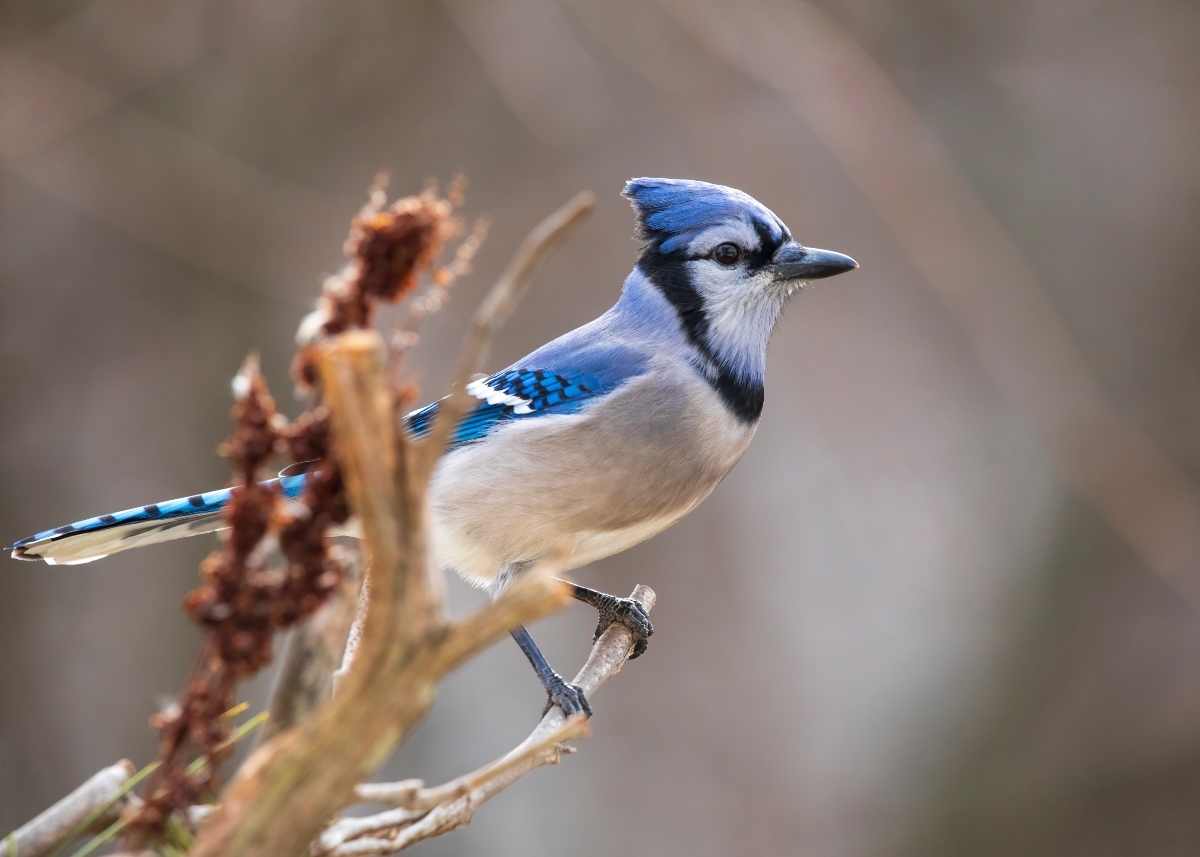With an impressive blend of vibrant colors and a bold personality, the Blue Jay">Jay, scientifically known as Cyanocitta cristata, commands attention in the avian community. This spirited bird, renowned for its intelligence and complex social systems, is a common resident in the forests, gardens, and urban areas of North America, where it adds a splash of brilliance to the green canopy.

Characterized by its striking blue and white plumage with touches of black and prominent crest on its head, the Blue Jay cannot be missed in a backyard setting. The bird’s vivid blue feathers owe their color not to pigments, but to light interference resulting from the internal structure of the feathers; a phenomenon that makes their appearance all the more fascinating.
Blue Jays primarily reside in deciduous forests with clearings but have successfully adapted to urban and suburban environments. Their diet is diverse, consisting mainly of nuts, seeds, and fruits, supplemented by occasional insects. A particular affinity for acorns has resulted in the Blue Jay being instrumental in the proliferation of oak trees, as they store these acorns in the ground and often forget about them, giving rise to new saplings.

The Blue Jay’s vocalizations are as varied as its diet. It is capable of producing a wide array of sounds, including the ability to mimic the calls of other bird species, notably the red-shouldered and red-tailed Hawk">Hawks, which helps in keeping potential predators at bay. Their communication repertoire also includes soft murmurs and melodious songs that facilitate social bonds within a group.
Breeding season unveils another layer to their complex social structure. Blue Jays form monogamous pairs that work together to build nests, usually located in the crooks of trees. The nests become a nurturing ground for their young, with both parents participating actively in rearing the offspring.

Despite their vibrant presence and frequent interactions with humans, Blue Jays are known for their shy breeding habits, preferring the privacy of thick foliage to raise their young. The female typically lays between 4 to 5 eggs, which are incubated for about 17-18 days before the young hatch to join the bustling community of Jays.
Unfortunately, these vibrant birds face threats from habitat loss and cat predation, particularly in urban settings. However, their adaptable nature and the increasing popularity of bird-feeding practices have allowed them to thrive in various environments.
Blue Jays, with their remarkable intelligence, vivid plumage, and complex behaviors, captivate bird watchers and enthusiasts alike. A glimpse of this brilliant bird, whether in flight or perched high in the treetops, brings a vivid splash of nature’s palette into our daily lives, reminding us of the rich biodiversity that graces our planet.